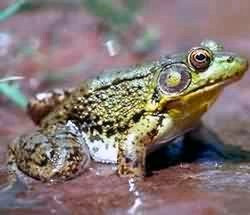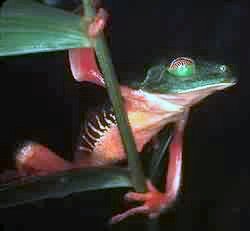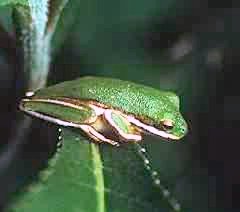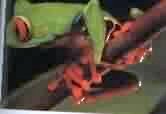 |
- A frog can fly. The flying frog Rhacophorus pardalis has the largest webbed feet of the whole frog family. When they leap they spread out their webbed fore and hind feet and sail for long distances.
|
- The marsupial frog puts its eggs in a pouch on its back. The eggs hatch into tadpoles which will grow into little frogs, all in the safety of the pouch. When the young frogs are old enough, their mother opens the pouch to let them out.
|
- The paradoxical frog is so called because as a tadpole it can be four times bigger than the frog it turns into.
|
 |
- Crab-eating frog, is a frog that will tolerate salty waters. It will enter the sea and eat crabs; onshore its diet consists of scorpions and other insects.
|
- Primitive frogs keeps their tails. Found only in 2 districts of New Zealand the frog Leiopelma is among the world's most primitive.
|
- The smallest frog and amphibian is Sminthillus limbatus of Cuba which is only 8.5 - 12mm (0.34 - 0.5 in) when fully grown.
|
 |
 |
- Golden Poison Dart Arrow Frogs are the most poisonous frogs of all. Each frog has enough poison in its skin to kill 1500 people.
|
- Frogs are edible. Many species can be eaten. They are very popular in France, where they are called grenouilles
|
- Some frogs live high in the trees of the rain forest. Frogs have special suction pads under their feet to help them climb the slippery bark.
|
 |
- Frogs don't have waterproof skins like humans have. They take in air and water through their skins.
|
 |
- Frogs can jump 5.3m (17 ft 7 in)
|
 |
- Largest frog is the Goliath Frog. It lives in Africa and its body may be as long as 36cm (14 in). It can reach the size of a small terrier.
|
 |
- Frogs stick out their tongues to catch insects, so fast, you'd be lucky to see it.
|















